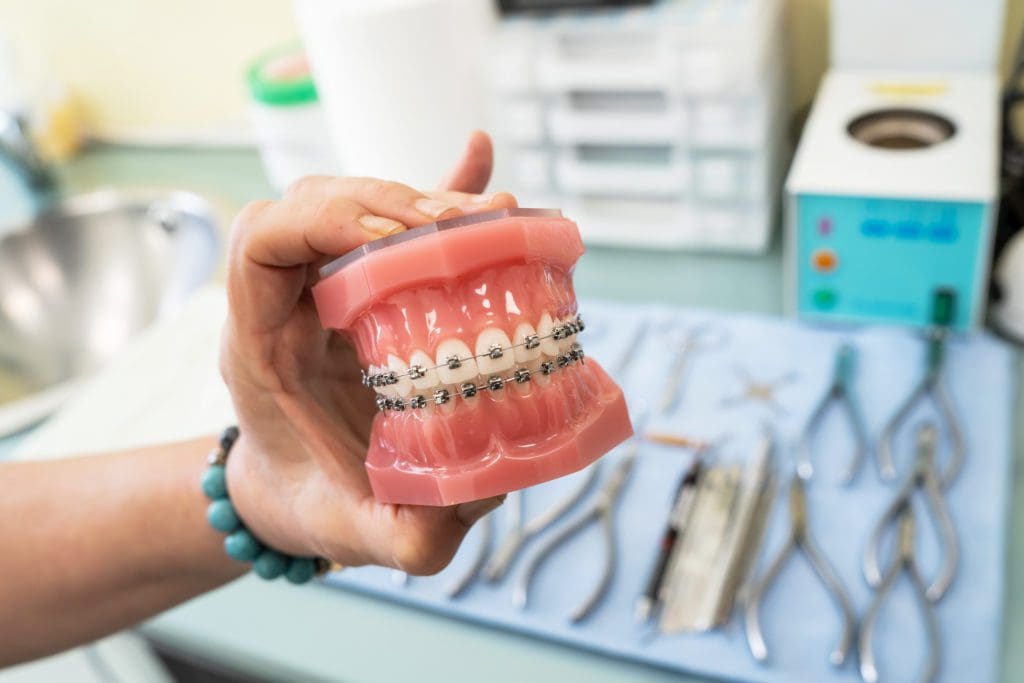Choosing the most effective Cumming Orthodontics for Effective Braces and Aligners Solutions
Choosing the most effective Cumming Orthodontics for Effective Braces and Aligners Solutions
Blog Article
Comprehensive Guide to Orthodontics Treatments for Fixing Oral Imbalances
Recognizing the details of each treatment, including their mechanisms, benefits, and possible drawbacks, is crucial in making educated choices about one's orthodontic treatment. As we browse through the comprehensive overview to orthodontic treatments for fixing oral imbalances, the elaborate information of each method will certainly unfold, losing light on the path toward a harmonious and functional dental alignment.
Orthodontic Procedures Overview

Along with clear aligners and conventional dental braces, orthodontists might also recommend various other interventions like headwear, palatal expanders, or retainers to resolve certain positioning issues (braces). These procedures are tailored to every client's unique needs and may involve a combination of therapies to attain the wanted outcomes. Routine modifications and tracking are essential parts of orthodontic treatment to guarantee progression gets on track and to make any kind of necessary alterations in the process. By going through orthodontic procedures, people can not just achieve a straighter grin however also improve their general dental health and wellness and feature.
Typical Braces: How They Function
When considering orthodontic treatments for dental misalignments, traditional dental braces stand out as a reliable approach for correcting teeth placing. Traditional dental braces consist of braces, wires, and bands that work with each other to apply continuous pressure on the teeth, gradually relocating them into the desired placement.
One key facet of just how typical braces job is the procedure of bone makeover. As pressure is put on the teeth through the braces, the bone bordering the teeth is reshaped to sustain the new tooth placements. This improvement is essential for the long-term stability of the remedied positioning. Clients will require regular changes at the orthodontist's workplace to guarantee the braces continue to apply the proper pressure for effective teeth movement.
Invisible Aligners: Pros and Cons
These clear, custom-made trays are essentially invisible when used, making them an enticing option for individuals looking for an extra visually pleasing orthodontic treatment. Patients can tooth pain eliminate the aligners before consuming or brushing their teeth, minimizing the threat of food obtaining stuck in the appliance and streamlining the cleaning process.

Surgical Orthodontic Options
Surgical treatments in orthodontics existing viable alternatives for dealing with intricate oral misalignments that may not be properly solved via standard orthodontic treatments. While unnoticeable aligners and conventional braces can deal with numerous orthodontic concerns, particular cases require medical treatment to attain ideal results. Surgical orthodontic options are generally advised for severe malocclusions, substantial jaw inconsistencies, and instances where the underlying bone structure needs adjustment to achieve correct positioning.
One typical medical orthodontic procedure is orthognathic surgical treatment, which entails rearranging the jaws to correct functional issues such as problem talking or eating. This surgical procedure is commonly performed in partnership with an orthodontist who aids line up the teeth before and after the procedure. Surgical orthodontics might likewise include procedures to expose influenced teeth, remove excess gum tissue, or improve best dentist near me the jawbone to create a more unified face account.
Before considering medical orthodontic choices, clients undertake an extensive evaluation to establish the need and prospective benefits of such interventions. cumming orthodontist. While surgical procedure might appear difficult, it can dramatically improve both the feature and aesthetic appeals of the smile in situations where standard orthodontic therapies fall short
Retainers and Post-Treatment Treatment

Post-treatment care involves complying with the orthodontist's directions diligently. This might consist of correct oral hygiene practices, going to follow-up appointments, and using the retainers as suggested. Failure to adhere to post-treatment treatment guidelines can cause relapse, where the teeth slowly move back towards their initial placements. Consistent retainer wear, good oral hygiene, and routine oral check-ups are necessary for preserving the results accomplished with orthodontic surgery and making sure the long-lasting stability of the corrected dental alignment.
Verdict
In final thought, orthodontic procedures supply numerous options for fixing oral misalignments. Surgical orthodontic options are readily available for more extreme imbalances. Overall, orthodontic procedures can efficiently enhance oral wellness and aesthetic appearance.
As we browse with the detailed guide to orthodontic treatments for correcting oral imbalances, the elaborate information of each method will unravel, losing light on the course toward a unified and functional dental placement. - braces
One of the most common orthodontic therapies is the usage of braces, which consist of steel braces and wires that use mild pressure to slowly move teeth right into the wanted placement.When thinking about orthodontic therapies for oral misalignments, standard dental braces stand out as a reliable technique for remedying teeth positioning. Furthermore, invisible aligners may not be ideal for intricate orthodontic concerns that call for even more substantial teeth activity, as they are usually recommended for light to modest cases. Retainers are personalized orthodontic tools created to hold teeth in their fixed placements after the completion of orthodontic therapy.
Report this page